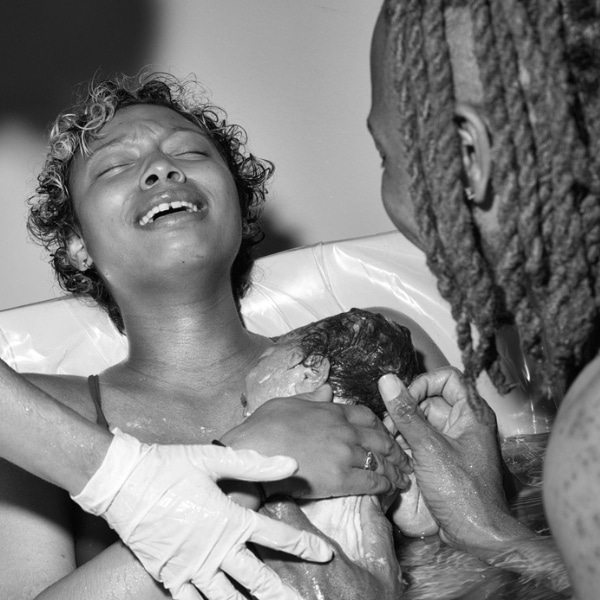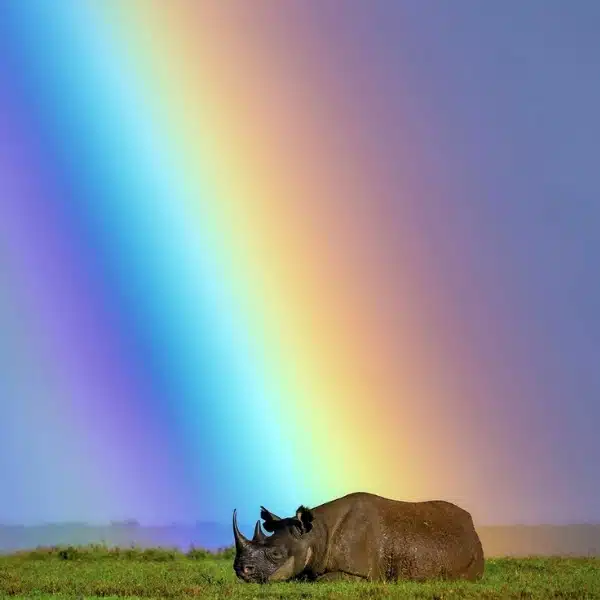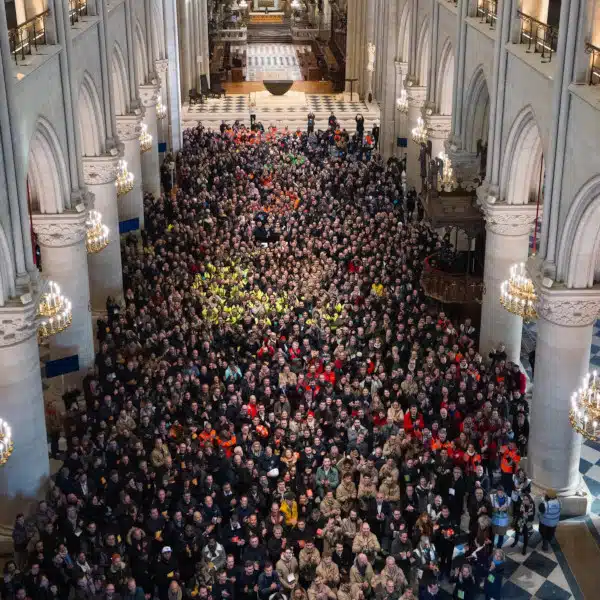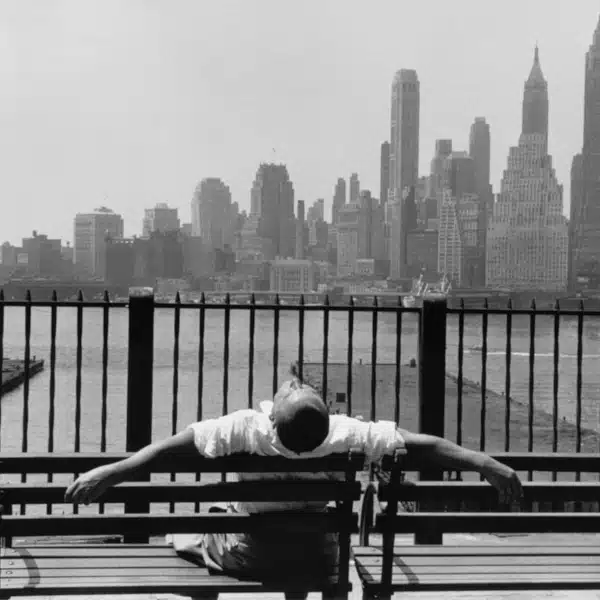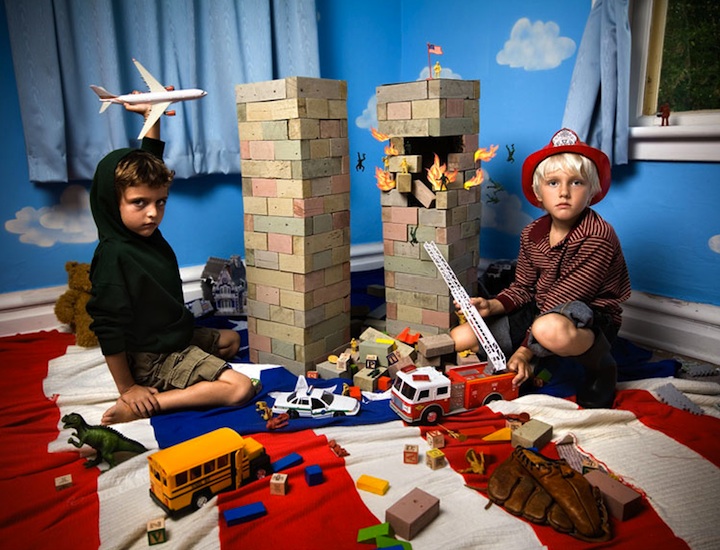
Photos of children at play seem innocent enough until you study them a little longer. Photographer and art director Jonathan Hobin has created a jarring series titled In the Playroom that makes us question what our children's brains are soaking in through the ever-pervasive modern media.
“Just as children make a game of pretending to be adults as a way to prepare and ultimately take on these roles in later life, so too do they explore things that they hear or see, whether or not they completely understand the magnitude of the event or the implications of their play,” Hobin says.
Look through each of these twelve scenes and you'll be reminding of a current event or news story that recently took place. Then, read our interview with Hobin below to really understand the issues he wanted to explore with this thought-provoking series.

Dear Leader
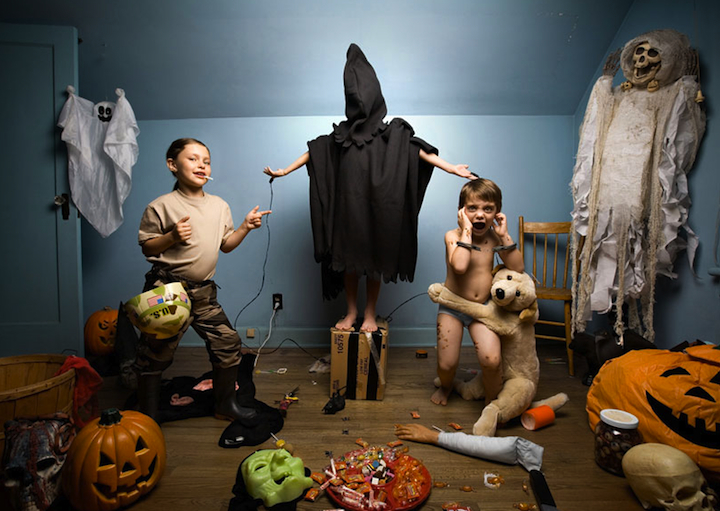
A Boo Grave
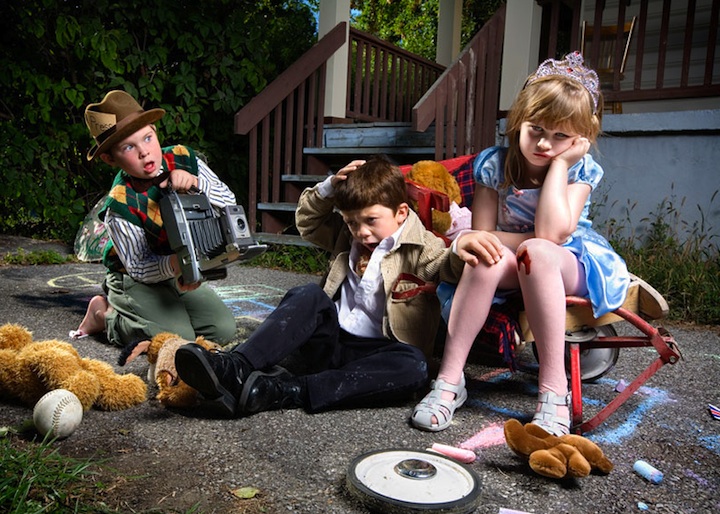
Diana's Dead
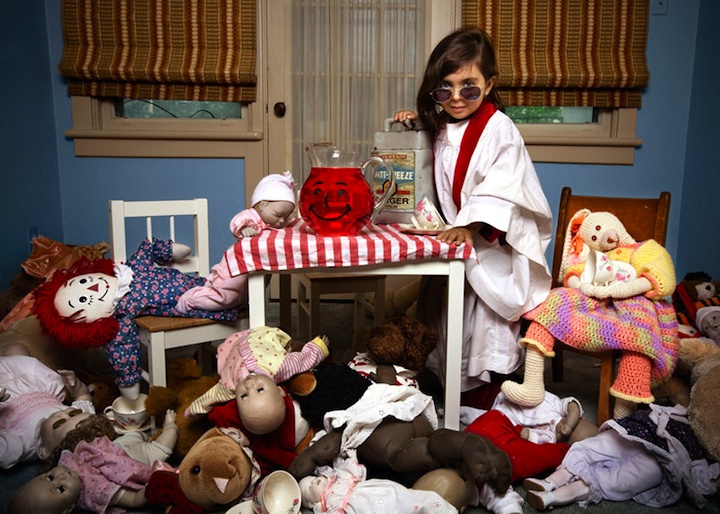
White Nights

Vegas Wedding

American Idol
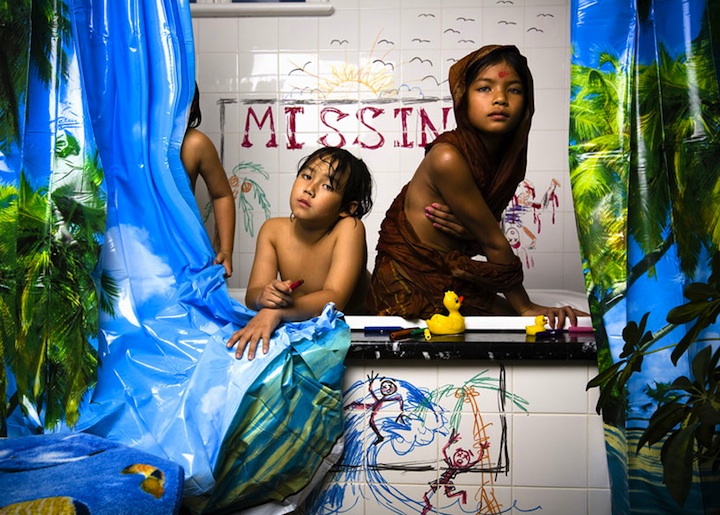
Boxing Day
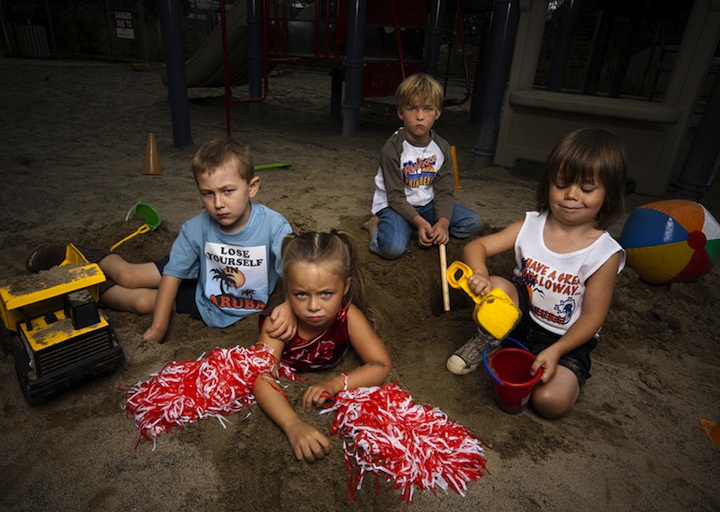
Spring Break
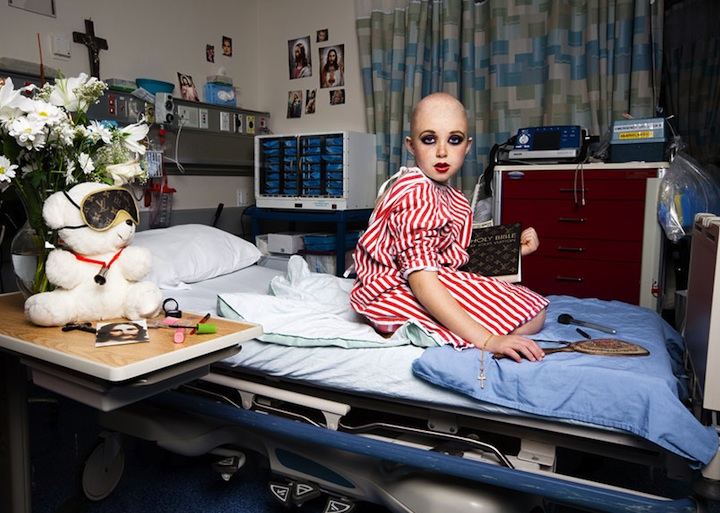
39 Lashes

The Saints
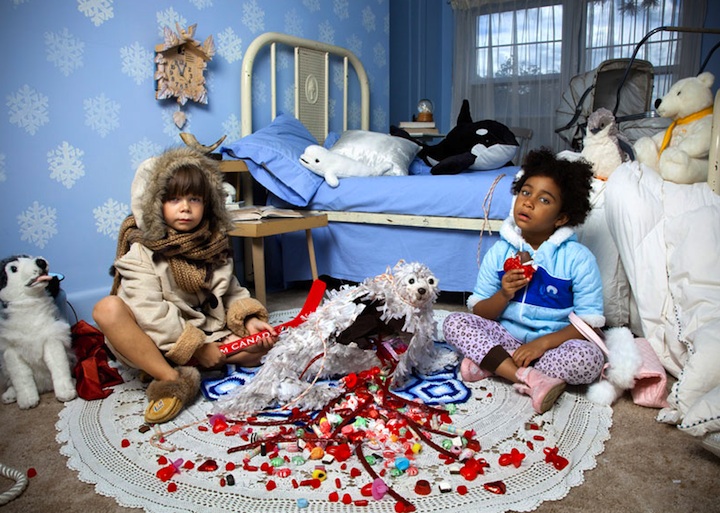
Seal Heart
Tell us about In the Playroom.
Most of my work is based on the darker or the more troubling aspects of childhood with an almost nostalgic tone. In The Playroom became an almost obvious extension of an idea I had previous explored about dark references in Mother Goose rhymes. Mother Goose rhymes were essentially created as a tool to teach or frighten children into a moral behaviour. I think that this process for childrearing served society well enough for a long time because children were able to more easily extract from these rhymes a simple moral code. The exposure to the world was fairly limited and more easily controlled. Until they grew and and were able to comprehend more complex ideas, children of previous generations were exposed to many dark aspects of society however the frequency and ferocity was nothing compared to what a child sees in our newly emerging global society.
With the modern media, which is so relentless and inescapable, I believe that children still attempt to process these ideas the same way they would a simple rhyme. They are looking to extract some sort of simple moral or concept. The problem is that the ideas that they are tackling are even too complicated for us as adults to understand. In The Playroom is a series intended for adults and was intended to communicate the idea that it is impossible for a modern child to escape these news stories which have had an incalculable impact on our society.
What was the creative process like?
My creative process was to simply imagine the major events that I witnessed during my lifetime and to imagine how a modern child, with limited context, experience and a flair for fantasy, might perceive the same event. The actual development and construction of the image was natural after that and the aesthetic choices I made were born from the devastating nature of the referenced events contrasted with the picture perfect doe-eyed dolls that we, as a society, pretend our children to be.
Who are the children and how did you get them to act in your fairly graphic scenes?
The children I chose are from a number of resources. Some are members of my family, some are children of friends and others are professional models who were unpaid for this project. One aspect of the controversy of this series, which was totally unexpected to me, was that people really felt upset about me photographing real children while referencing these scenarios. I found this strange considering children are continuously being touched by these narratives and the work was being created to inspire a dialogue on that fact. The parents of the children who participated in this project understood the benefit of the project and had total faith in my intention before proceeding. The kids had a great time getting dressed up and loved seeing their images on a gallery wall.
Which is your most poignant piece or the one you based the whole idea on?
The first image from the series was The Twins. 9-11 in my mind was clearly the image that defined exactly how a monumental event in conjunction with inescapable media produced a global and collective memory. We have seen the images of the planes hitting the buildings so many times that we can't count. That event has become legendary and almost becomes a modern fairy tale for todays youth. Once I began imaging children ‘playing 9-11' my mind started exploring the other events of the modern world which might also inspire the imagination of a child. Abu Ghraib, the death of JonBenet Ramsey and North Korea followed shortly after.
You created the series back in 2007. What jump started it now in 2011?
I want to be clear that this series began in 2007 but I did not complete and print the images until 2010. Many of the images had been shot but remained untouched and not reworked until recently. Also, the process of collecting costumes, props and building sets is a lengthy one. I do it all myself and without a team so the process of beginning and ending is a lengthy and blurry one.
I completed 12 of the images for a gallery show in Canada's capital city in September 2010 and since then the series has received massive exposure in Canada and has been featured in many different media around the world. The nature of the images is something that almost every society can relate to and there is at least one story that seems to really resonate with each individual. I think I've created something very ‘of the moment' and it's also very ‘of the moment' to spread information.
Seeing the series go viral is wonderful but it's also very reminiscent of the point I am making about the unavoidable and pervasive nature of the media. I'll also make the observation that America has been strangely slow to pick up on these images despite being the main subject of them.
There's definitely a disturbing feeling to this series. What kind of emotions did you want to elicit from the viewer?
I think that humour is an interesting thing. The subject of the work is obviously dark and I could have chosen to make images that were simply disturbing but that would have alienated a lot of viewers. I think that I tried to create images that involved more than one emotion to keep viewers engaged and to constantly challenge them. I didn't want to make art with only one note or images that implied we are all doomed. Similar to life, sometimes you need to laugh and sometimes we need to cry. Sometimes life seems overwhelming and others times we see it as nothing more than child's play.











































































